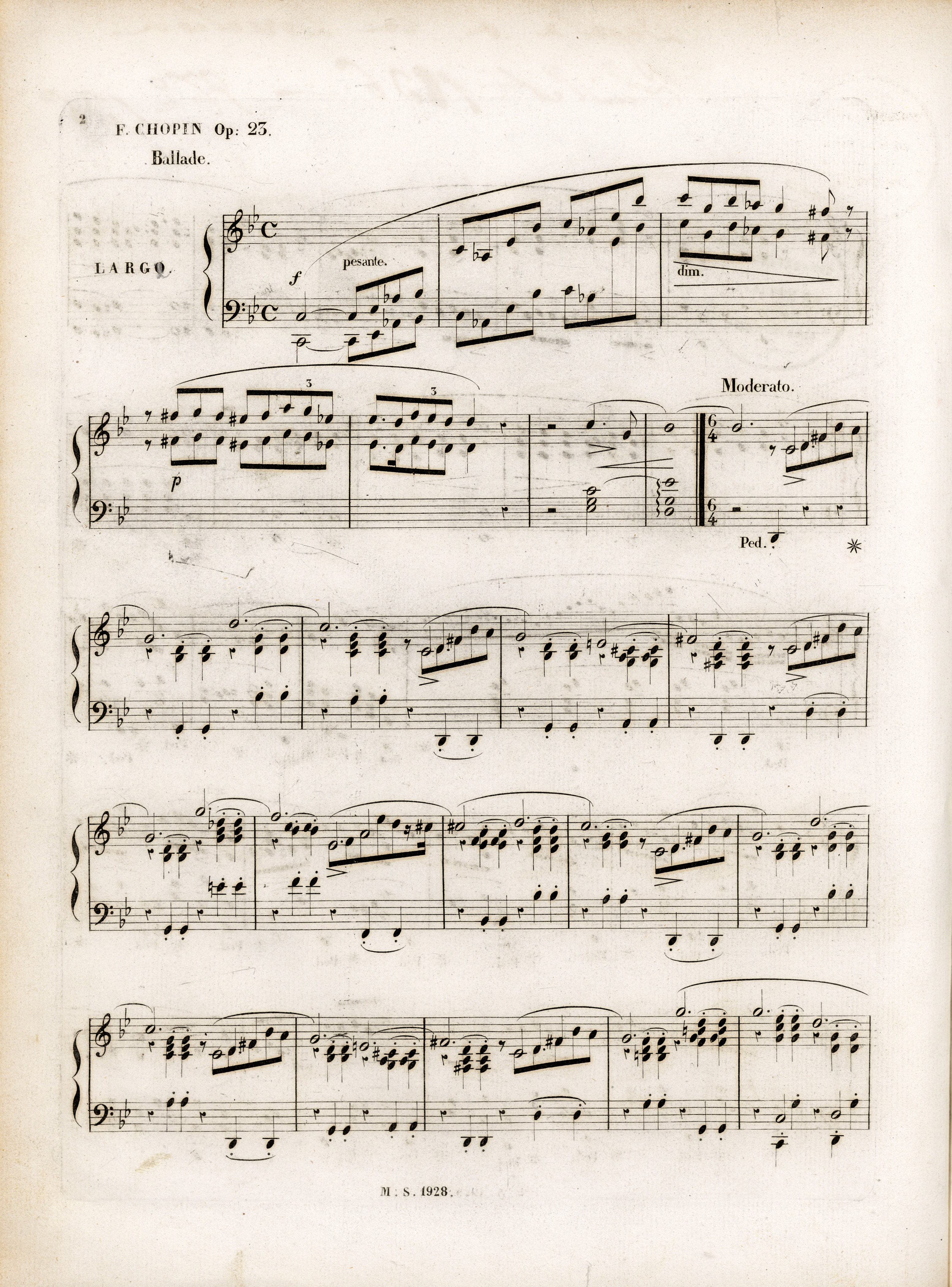Op. 2, Variations in B♭ major
Op. 10, 12 Etudes
Op. 11, Concerto in E minor
Op. 21, Concerto in F minor
Op. 22, Polonaise in E♭ major
Op. 24, 4 Mazurkas
Op. 25, 12 Etudes
Op. 26, 2 Polonaises
Op. 27, 2 Nocturnes
Op. 28, 24 Preludes
Op. 30, 4 Mazurkas
Op. 35, Sonata in B♭ minor
Op. 50, 3 Mazurkas
Op. 63, 3 Mazurkas
Op. 64, 3 Waltzes
(Op. 4), Sonata in C minor




Op. 23, Ballade in G minor
In A, the pesante marking is written high on the top stave, while its beginning falls over the slur. Such a placement prompted the engraver of FE to put it over the top stave; however, in the stage of proofreading FE1, the indication was moved – probably at Chopin's request – to between the staves, directly over the R.H. part.
Compare the passage in the sources »
category imprint: Source & stylistic information
issues: Authentic corrections of FE
notation: Verbal indications

